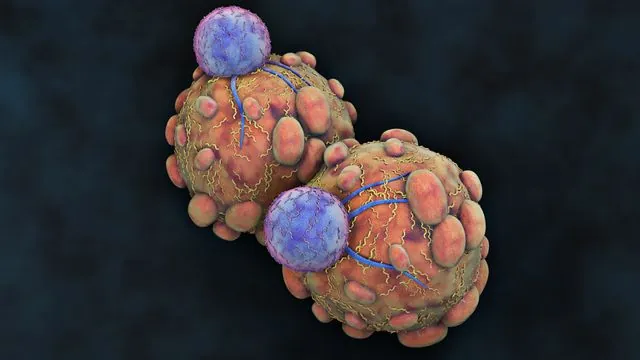
Revolutionary CRISPR Model Unlocks Secrets of Prostate Cancer Spread
2024-09-24
The Map of Metastasis
The study, led by Dr. Dawid Nowak, assistant professor of pharmacology in medicine, reveals how prostate cancer cells navigate their way throughout the human body. “Using virtual maps, we can reveal the hidden highways of metastases, one day guiding us toward novel therapies that could act as roadblocks for cancer,” Dr. Nowak emphasized. Prostate cancer remains one of the most common cancers among men, with roughly 12% facing a diagnosis in their lifetime. The American Cancer Society forecasts around 35,250 deaths from prostate cancer in the United States in 2024, demonstrating the urgent need for advanced treatment solutions. "Prostate cancer that spreads to vital organs like the lungs, liver, and bones severely impacts survival rates," warned Dr. Ryan Serio, lead author of the study. While localized cancer sees nearly 100% survival rates, metastasized cancer drops the survival odds to less than 40%.
The EvoCaP Model: A Game Changer
To study the mechanisms of prostate cancer metastasis, the research team developed an innovative mouse model known as EvoCaP. This collaborative effort included several brilliant minds, including Dr. Christopher Barbieri, an associate professor of urology, and computational biologists Drs. Adam Siepel and Armin Scheben. In a groundbreaking approach, the researchers introduced a virus into 12-week-old mice, designed to delete two critical tumor suppressor genes and promote the growth of prostate cancer. Adding further complexity, they incorporated a “barcode” – unique genetic markers that can be traced using CRISPR technology. This ingenious method allows researchers to follow the cancer clones – cells that originate from the primary tumor and share genetic traits – throughout the mice's lifespan, observing changes over a crucial 60-week period.
Patterns of Spread Revealed
By utilizing barcoding techniques alongside genetic sequencing and bioluminescence imaging, the researchers were able to track the movement of these cancer cells. Dr. Serio noted, “With barcoding, we were able to follow clonal cells as they spread to different metastatic sites throughout the body.” This allowed them to discover that while predominant cancer cells were found in the primary tumor, metastasis often stemmed from a minor group of particularly aggressive clones. The results revealed that once cancer cells infiltrate a secondary organ, they tend to remain rather than continue spreading, with only a subset of these cells initiating further metastasis. These so-called “seeding topologies” reflect patterns observed in human cases, underscoring the significance of this research.
Implications for Future Therapies
The researchers expressed enthusiasm about the similarities in metastatic pathways observed between their mouse model and human cases. “Using our techniques to map the metastatic cell trajectories gives us a great start in getting to the bottom of how this deadly cancer spreads,” Dr. Nowak added. Such insights are not just academic; they pave the way for more effective therapeutic strategies that could significantly enhance patient outcomes. This groundbreaking research not only deepens our understanding of prostate cancer metastasis but also challenges the scientific community to reevaluate treatment methodologies for one of the deadliest forms of cancer. As advancements in gene-editing technologies like CRISPR continue to evolve, the battle against cancer is poised to enter a new frontier. Stay tuned as we follow the developments in this crucial area of research!




 Brasil (PT)
Brasil (PT)
 Canada (EN)
Canada (EN)
 Chile (ES)
Chile (ES)
 España (ES)
España (ES)
 France (FR)
France (FR)
 Hong Kong (EN)
Hong Kong (EN)
 Italia (IT)
Italia (IT)
 日本 (JA)
日本 (JA)
 Magyarország (HU)
Magyarország (HU)
 Norge (NO)
Norge (NO)
 Polska (PL)
Polska (PL)
 Schweiz (DE)
Schweiz (DE)
 Singapore (EN)
Singapore (EN)
 Sverige (SV)
Sverige (SV)
 Suomi (FI)
Suomi (FI)
 Türkiye (TR)
Türkiye (TR)